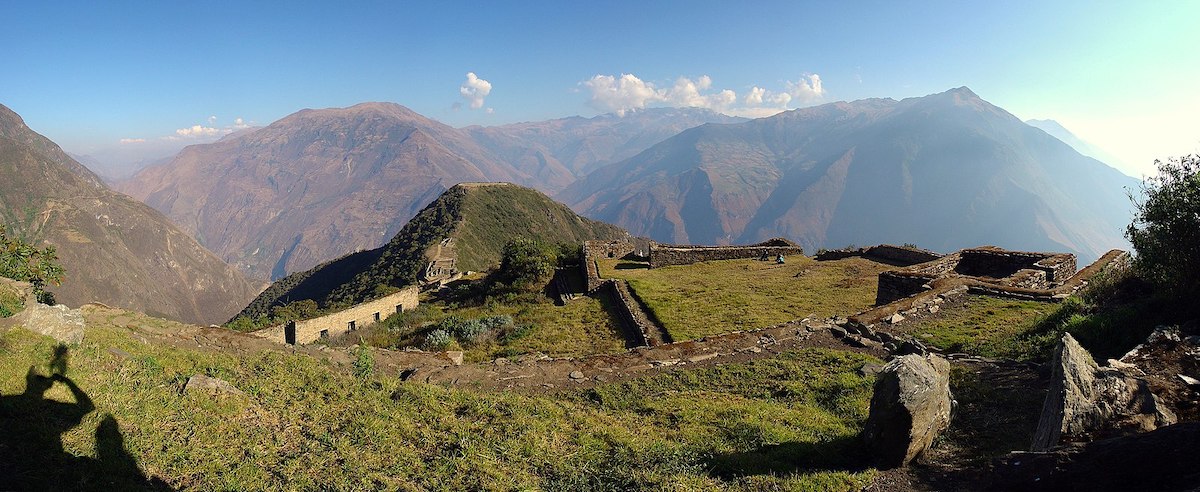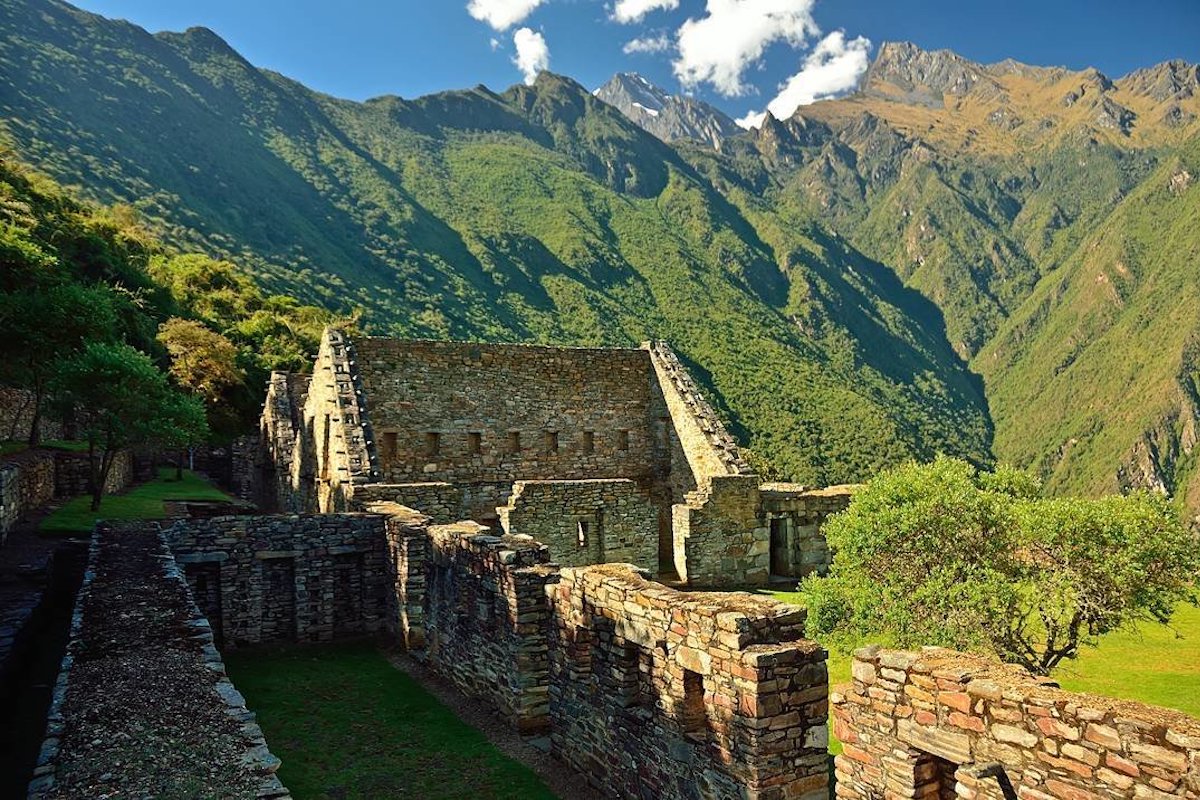By: Heather Keys
Ensconced within the Vilcabamba mountain range of southern Peru, Choquequirao—or “Cradle of Gold” in the Quechua language—is an Incan archaeological site. Sitting at an altitude of approximately 9,840 feet (3,000 meters), Choquequirao is often likened to its more famous counterpart, Machu Picchu, due to their shared architectural styles, layouts, and cultural significance.
Constructed during the 15th century under the rule of Inca Emperor Pachacuti, Choquequirao functioned as a royal estate, an administrative hub, and possibly a sanctuary during the Spanish conquest. Though only about 30% of the site has been excavated and restored, the existing remnants still reveal the exceptional engineering and architectural abilities of the Inca civilization.
Noteworthy Features of the Choquequirao Ruins

Image by McGhiever on Wikimedia Commons.
Terraces
Like Machu Picchu, Choquequirao is known for its extensive agricultural terraces that ascend steep mountainsides. These terraces provided fertile land for cultivation, enabling the Incan inhabitants to grow crops such as corn, potatoes, and quinoa. The decks also played a crucial role in erosion prevention, as they helped stabilize the slopes and retain soil and water.
Ceremonial plazas
Numerous plazas are scattered throughout Choquequirao, each with its unique characteristics. These plazas likely served as venues for ceremonial events, religious rituals, and social gatherings. They were an integral part of Incan life, functioning as communal spaces for spiritual and secular activities.
Temples and sacred sites
Choquequirao is home to various temples and sacred sites dedicated to an array of Incan deities. Some of these significant structures include the Temple of the Water, which features intricate water channels and fountains, and the Usnu, a ceremonial platform employed for religious rituals and astronomical observations. These sacred sites highlight the Incan civilization’s complex religious beliefs and practices.
Stone llamas
A unique feature of Choquequirao is a set of terraces adorned with white stone llamas. These life-sized representations of llamas are carefully arranged on the decks—llamas held great significance in Incan culture, as they provided wool for clothing, and served as pack animals. The stone llamas at Choquequirao showcase the importance of these animals as symbols of prosperity and their close relationship with the Incan people.
Choquequirao for Travelers

Image by Martin St-Amant on Wikimedia Commons
Far less frequented than Machu Picchu, Choquequirao’s remote location and challenging 4- to 5-day trek from Cachora make it a less accessible but enriching destination for adventurous travelers. The demanding journey offers a more secluded and immersive experience, far removed from the crowds of tourists that frequent Machu Picchu.
Trekking conditions
The trek to Choquequirao takes you through several types of landscapes, including mountain passes, cloud forests, and dry valleys. The rugged mountain terrain and altitude fluctuations can be physically demanding, requiring a good fitness level and acclimatization to the altitude. The trek involves steep ascents and descents, as well as crossing the Apurimac River on footbridges or makeshift cable cars.
Camping and accommodation
Unlike the more developed Inca Trail to Machu Picchu, the trek to Choquequirao offers limited accommodation options. Travelers must be prepared to camp along the route, carrying their own tents, sleeping bags, and other camping gear. Some basic campsites offer amenities like food, water, and toilet facilities, but it’s essential to be self-sufficient and prepared for the remote conditions.
Guides and support
Although it is possible to trek independently to Choquequirao, hiring a knowledgeable local guide is highly recommended. Guides not only provide valuable insights into the history and culture of the site, but they also ensure that travelers stay on the correct trail, navigate challenging terrain safely, and adhere to responsible tourism practices.
Responsible tourism
When embarking on a journey to Choquequirao, it is crucial to minimize the impact on the delicate archaeological site and the surrounding environment. This includes staying on designated trails, not touching or climbing on the structures, disposing of trash properly, and respecting local customs and traditions. Travelers should also support local communities by hiring local guides and purchasing goods and services from local businesses.
By undertaking the challenging trek to Choquequirao, adventurous travelers will be rewarded with a more authentic and intimate exploration of an ancient Incan site, far from the crowds that characterize the more famous Machu Picchu.
Have you had the chance to travel to Peru and to see ruins and ancient sites? Join the Frayed Passport community and tell us about it!
About the Author
Originally from Indiana, Heather believes every destination has a story worth telling and a reason to visit. With a deep love of adventure, history, and psychology, she shares travel trivia, tips, and inspiration to encourage you to explore the world with curiosity and optimism. Read her other articles on Frayed Passport here.Featured image from Juanca loayza on Wikimedia Commons.
Frayed Passport is a participant in the Amazon Associates Program, an affiliate advertising program designed to provide a means for sites to earn advertising fees by advertising and linking to Amazon.com. We also may share links to other affiliates and sponsors in articles across our website. If you have questions or concerns, please contact us.

